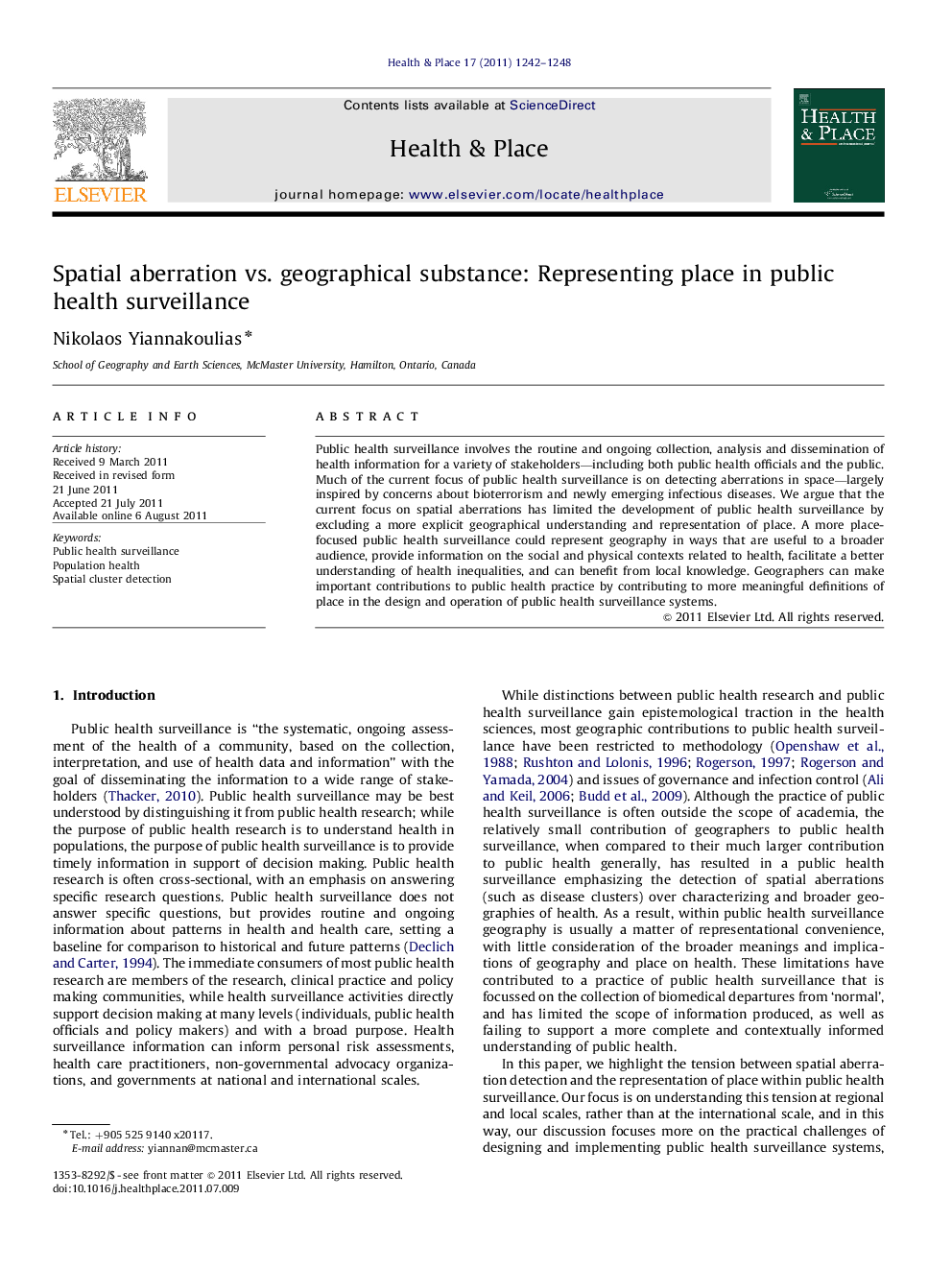| Article ID | Journal | Published Year | Pages | File Type |
|---|---|---|---|---|
| 1048629 | Health & Place | 2011 | 7 Pages |
Public health surveillance involves the routine and ongoing collection, analysis and dissemination of health information for a variety of stakeholders—including both public health officials and the public. Much of the current focus of public health surveillance is on detecting aberrations in space—largely inspired by concerns about bioterrorism and newly emerging infectious diseases. We argue that the current focus on spatial aberrations has limited the development of public health surveillance by excluding a more explicit geographical understanding and representation of place. A more place-focused public health surveillance could represent geography in ways that are useful to a broader audience, provide information on the social and physical contexts related to health, facilitate a better understanding of health inequalities, and can benefit from local knowledge. Geographers can make important contributions to public health practice by contributing to more meaningful definitions of place in the design and operation of public health surveillance systems.
► Finding spatial aberrations of disease is important to public health surveillance. ► Spatial aberrations may poorly represent the practical and contextual features of place. ► Public health surveillance may be enhanced by a more place-oriented approach.
